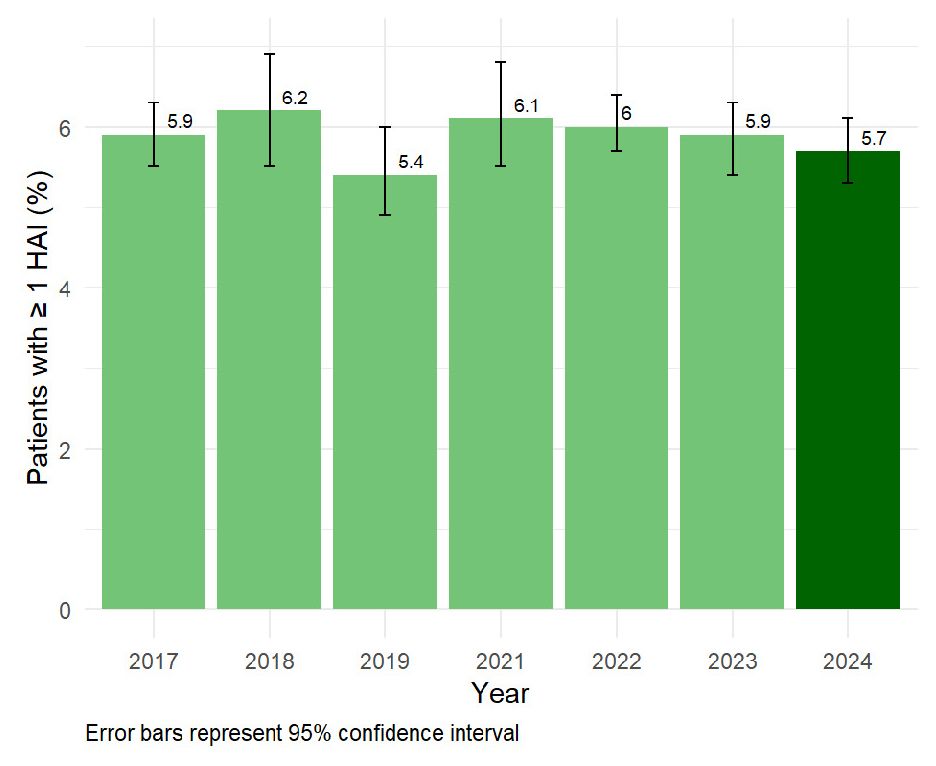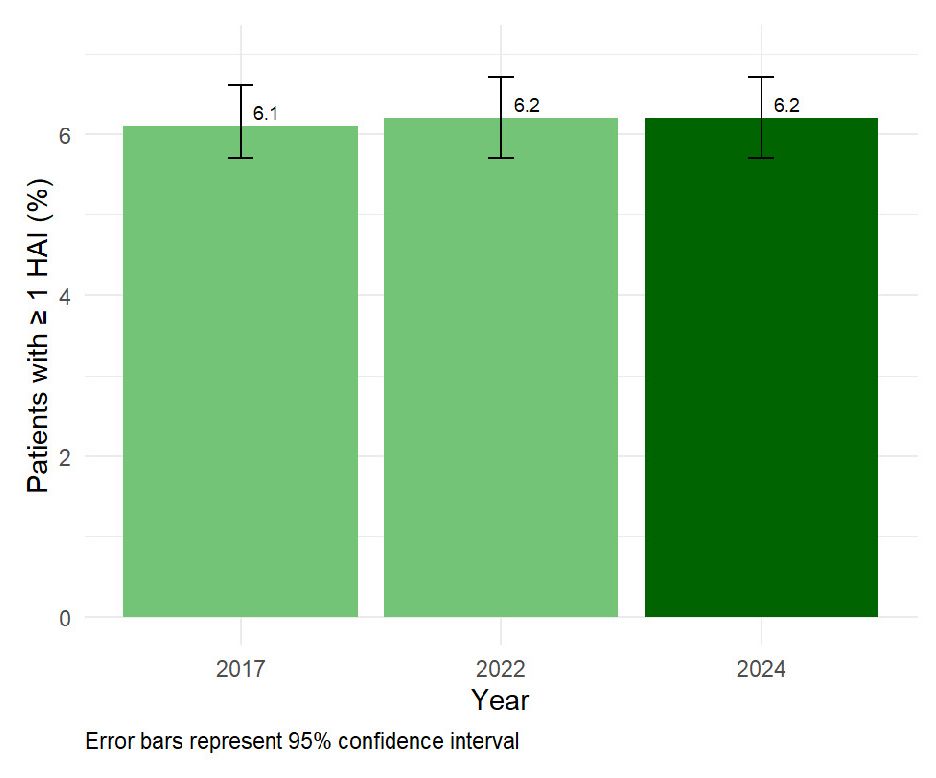Point prevalence surveys in hospitals
Since 2017, Swissnoso has been conducting point prevalence surveys with the support of the Federal Office of Public Health FOPH. These surveys provide information about the rate and type of healthcare-associated infections and on the quantities and types of antibiotics used.
Regular point prevalence studies (PPSs) are used to generate robust and representative data at the national level. This helps when it comes to tracking the development of preventable infections in Swiss hospitals and identifying starting points for improvement.
To this end, the hospitals participating collect data on healthcare-associated infections (HAIs) and the use of antimicrobial agents in their inpatients on a specific day between April and June.
Since 2024, the PPS has also been evaluating where hospitals stand in terms of implementing the structural minimum requirements for the prevention and control of HAIs. These data are an important foundation for assessing the impact of the preventive measures implemented.
Switzerland reports fewer HAIs than the European average
Hospitals have been able to participate in the PPS every year since 2017 (except 2020 because of the Covid-19 pandemic) and on a voluntary basis. In addition, national PPSs are carried out at regular intervals in the same year as the European Centre for Disease Prevention and Control (ECDC) conducts its PPS. This means that for 2017 and 2022, it was possible to make an additional comparison with data from European countries.
The ECDC’s 2022-23 PPS, covering 1,332 participating hospitals in 31 European countries, found that 7.1 per cent of patients suffered from a hospital infection. With a prevalence of 5.7 per cent in 2024, Switzerland is slightly below the European average (Data collected from 12,414 patients in 103 hospitals).
Participation on the rise
Hospital participation in the years of the national PPSs has been high, and since 2023 there has also been an increase in participation outside the national studies. Participation in the 2024 PPS was again in line with the rate for the previous national PPS. One possible explanation for this increasing participation is that the PPS is a measure for implementing the structural minimum requirements, now mandatory in certain cantons.
The findings over time show that the prevalence of HAIs in Swiss acute care hospitals has remained constant since 2017.
Initial evaluation of the minimum requirements as part of the 2024 PPS
The 2024 PPS for the first time evaluated the extent to which the national structural minimum requirements have been implemented. The findings enable hospitals to identify areas for improvement within their IPC programmes.
Overall there were high scores in areas such as materials and equipment and the organisation of the IPC. Prevention, audits, monitoring and training scored lowest; these areas require particular attention if the overall rate of HAIs is to be reduced in line with the national roadmap: 5 per cent in 2030 and 4 per cent in 2035 (see operational targets for hospitals), and improving patient safety.
Further information
You will find reports for all PPSs and information on participating in the PPS on the Swissnoso website (see Links below).
Federal Office of Public Health FOPH
Infection Control and Control Measures Section
Schwarzenburgstrasse 157
Switzerland - 3003 Bern



